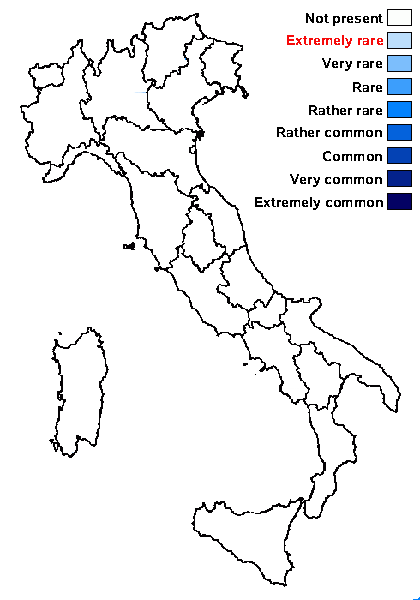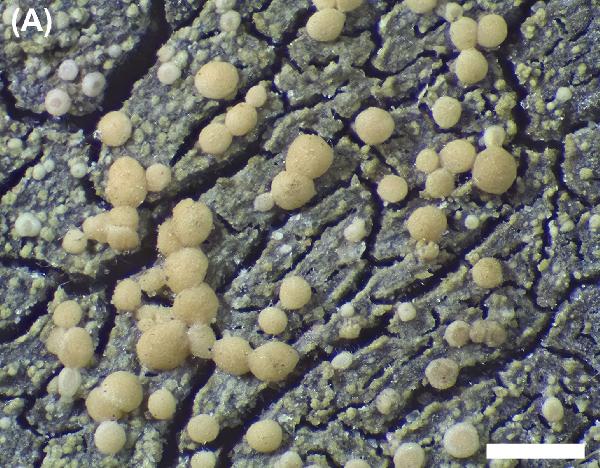Bacidina lignicola S. Ekman
Nordic J. Bot.: e03846, 12, 2023.
Synonyms:
Distribution:
Description: Thallus crustose, pale grey to grey-green, of scattered, convex areoles fusing into a continuous, warted crust, without goniocysts. Apothecia biatorine, 0.15-0.44 mm across, sessile, often confluent and appearing tuberculate, pale pink (becoming orange-brown in the herbarium), translucent when wet, with a flat to strongly convex disc and a usually slightly paler, soon excluded proper margin. Proper exciple 37-73 µm wide, unpigmented and without crystals the hyphae radiating, dichotomously branched and anastomosing, ± thin-walled, with lumina measuring up to 12 x 4 µm, the terminal cells often somewhat larger than subterminal cells, globose, up to 8 µm wide, below hypothecium forming a thick cushion of hyphae with narrowly to widely ellipsoid cell lumina; epithecium colourless or pale brownish yellow, scarcely differentiated from the hymenium; hymenium mostly colourless, 27-51 μm high (10–20% of the total apothecium height), without crystals; paraphyses simple, 1.6-2.6 μm thick at mid-level, the apical cells clavate, up to 7 μm wide; hypothecium colourless. Asci 8-spored, clavate to cylindrical-clavate, the apical dome K/I+ dark blue with a pale, conical-pointed apical cushion (axial mass) never penetrating through the entire d-layer, the wall K/I-, but the thin outer gel K/I+ blue, Bacidia-type. Ascospores (0-)3-7-septate, hyaline, acicular, straight or curved, 23-43 x 1.2-3.1 μm. Pycnidia abundant, 50-130 μm wide, immersed to semi-immersed, unilocular, at first globose with a pore-like ostiole, then cylindrical with a widely gaping ostiole, the walls colourless. Conidia formed terminally, needle-like (but wider at one end), (0-)1-3-septate, straight, 22-43 x c. 1.2 µm. Photobiont chlorococcoid, the cells (4.5-)6-11(-13) μm. Spot tests: thallus and apothecia K-, C-, KC-, P-, UV-. Chemistry: thallus without lichen substances.Note: a recently-described species, mostly growing on stumps of conifers, more rarely of broad-leaved trees such as Betula, known from Scandinavia, Poland and the Czech Republic. To be looked for in the oroboreal belt of the Italian Alps.
Growth form: Crustose
Substrata: lignum
Photobiont: green algae other than Trentepohlia
Reproductive strategy: mainly sexual

Predictive model
Growth form: Crustose
Substrata: lignum
Photobiont: green algae other than Trentepohlia
Reproductive strategy: mainly sexual

Predictive model


